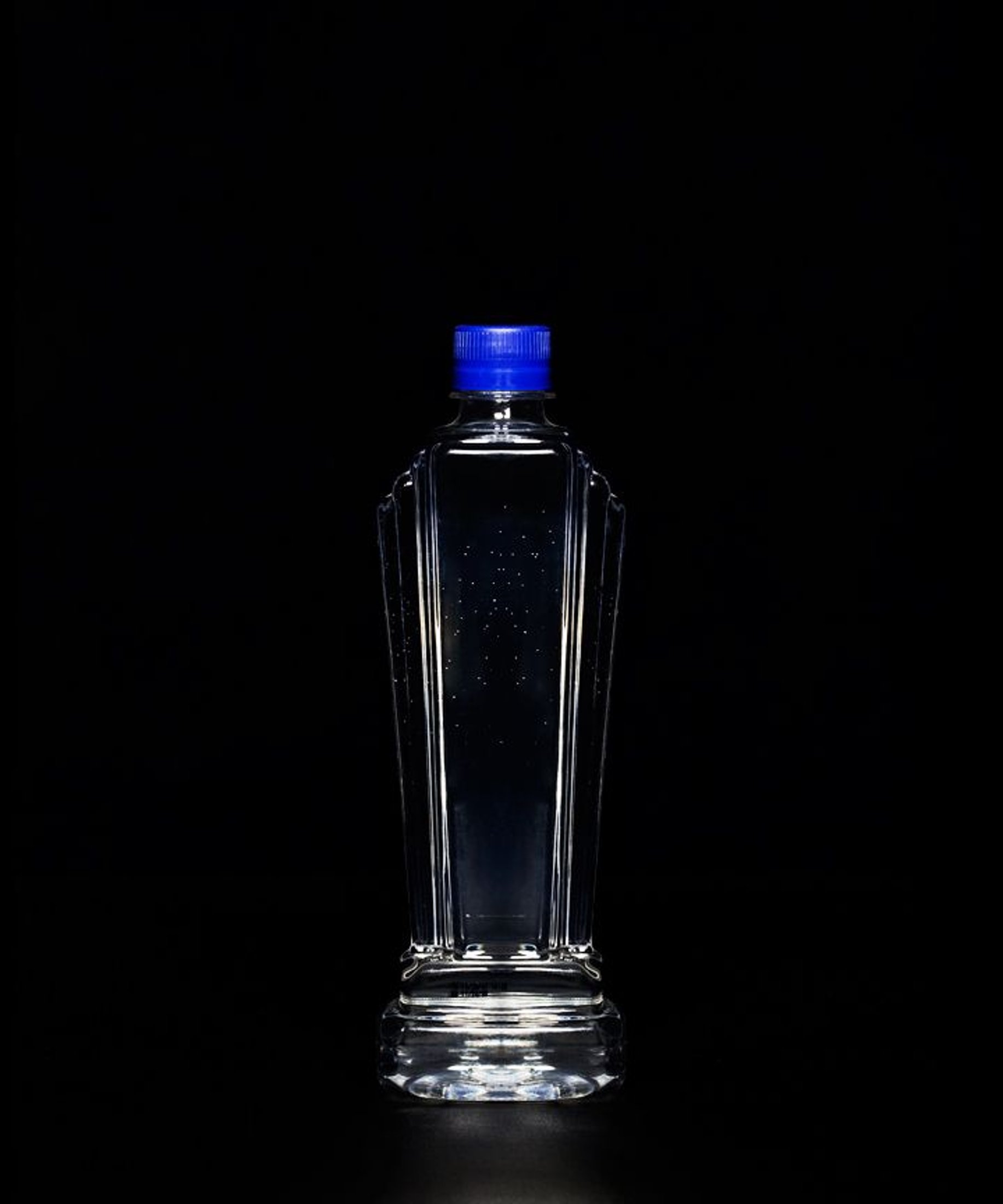In this series of typological photographs, plastic
bottles that house our drinking water come under the camera’s lens.
There are over
3,000 brands of bottled water worldwide, 180 in the United States. In
2006, the global bottled water industry reached $50 billion.
Just thirty
years ago commercially produced bottled water barely existed in the United
States. Today, Americans are the leading consumers of bottled water
at 32 billion liters per year.
According to the Environmental Protection
Agency, one in five Americans drinks only bottled water. In a July 2007 article in Fastcompany.com, Charles Fishman theorizes: “Bottled
water has become the indispensable prop in our lives and culture….
the food phenomenon of our times…. a chilled plastic bottle of
water in the convenience-store cooler is the perfect symbol of this moment
in American commerce and culture. It acknowledges our demand for instant
gratification, our vanity, our token concern for health.”
Our current relationship with bottled water
was born in the 1960s and 1970s as plastic technologies
advanced. New plastic bottles made of polyethylene terephthalate (PET)
– clear, tasteless and lightweight – alleviated some of the
inherent distribution limitations of glass bottles.
Evian, a still water offered in plastic bottles,
exploded onto the American market in the early 1980s. The strategy promoting these
new plastic bottled waters centered on health, celebrity, exclusivity
and portability – a marketing approach so successful that it continues
today. Fishman refers to this period of time as the alignment of “convenience
and virtue.”
Considering that there is no evidence that bottled water
is healthier than tap water; that 40% of bottled water comes from the
tap; that 17 million barrels of oil are required to produce the plastic
bottles used in the United States in one year; that 86% of plastic water
bottles used in the United States become garbage or litter; that bottled
water may cost 10,000 times as much as tap water; and that,
in terms of marketing dollars, the bottled water’s budget is a drop
in the bucket when compared to the carbonated beverage industry, its
success seems illogical and unlikely.
Ironically, in the developed world, demographically speaking, bottled water consumers
are the folks most concerned with the very environmental and social issues
associated with bottled water.
– Frank Yamrus

Feature
Rune Lagu
There are over 3,000 brands of bottled water worldwide. Frank Yamrus photographs 25 of them, stripped of their labels, as if they are jewels or trophies, symbols of status and vanity.
View Images
Feature
Rune Lagu
There are over 3,000 brands of bottled water worldwide. Frank Yamrus photographs 25 of them, stripped of their labels, as if they are jewels or trophies, symbols of status and vanity.
Rune Lagu
There are over 3,000 brands of bottled water worldwide. Frank Yamrus photographs 25 of them, stripped of their labels, as if they are jewels or trophies, symbols of status and vanity.

